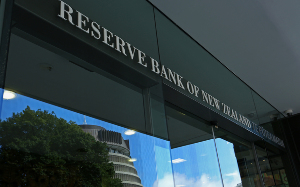
It was not long ago that banks were announcing interest rate changes frequently, if not daily. But, of late, that had changed.
Until this week when, for the first time in a while, several banks announced rate movements.
ANZ increased its one year standard and special rates by 10 basis points while BNZ upped its two year classic rate slightly.
Conversely, Kiwibank dropped its one year special rate by 24 basis points.
At the same time, New Zealand’s 10 and two year swap rates have both risen to multi-month highs.
This burst of movement comes on the back of tightening rhetoric from central banks around the world.
The US Federal Reserve recently lifted interest rates for the third consecutive quarter, while talk from the Bank of England and the Bank of Canada indicates rates are likely to tighten sooner rather than later.
ANZ economists have said that as collective central bank rhetoric becomes more hawkish, a strong message that the extremely low interest rate and QE era is coming to an end is emerging.
To date, New Zealand’s Reserve Bank, like Australia’s, has been out of step with this and has indicated that the OCR is likely to stay on hold at 1.75% for some time.
In fact, the Reserve Bank’s official projections don’t anticipate any rise in the OCR until late 2019 or early 2020.
But speculation that the Reserve Bank may have to move sooner and lift the OCR next year has been gathering pace.
If other central banks do start moving in the way they have suggested, economists believe it will make it easier for the Reserve Bank to also do so.
For New Zealanders this is likely to result in some interest rate movement – although significant rises are not anticipated.
ASB economist Kim Mundy said that while the OCR has remained at record lows, domestic banks’ funding environments remain constrained.
“As a result, the practice of attracting deposits through higher term deposit rates is continuing, keeping a floor under mortgage rates."
There are a number of opposing forces impacting interest rates at the moment, she said.
“But, overall, mortgage rates remain low relative to historical averages, with ‘specials’ even lower for most term rates.”
ASB expects the Reserve Bank to leave the OCR on hold until late 2018, Mundy said.
“Given this is one factor influencing floating and shorter-term fixed mortgage rates, we are not likely to see the floating mortgage rate and short-term fixed rates decline any further this year.
“Further, higher funding costs could see further (but modest) upward pressure on shorter-term interest rates.”
For BNZ senior strategy analyst Jason Wong, expectations of unchanged monetary policy for some time mean floating rates and short-dated fixed rates should remain fairly flat through the rest of the year.
He said that a slight upward bias prevails due to upward pressure on bank funding costs.
“Next year, the possibility of higher wholesale rates increases as the first expected policy tightening by the Reserve Bank approaches.”
The key message is that borrowers can expect a historically low OCR to help keep floating borrowing rates well contained through 2017, but upside risk prevails through 2018, Wong said.
Read more:





Comments
No comments yet.
Sign In to add your comment